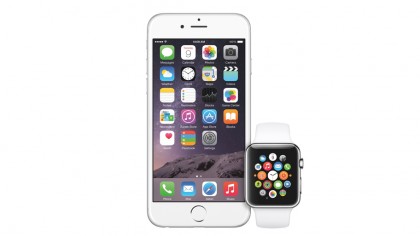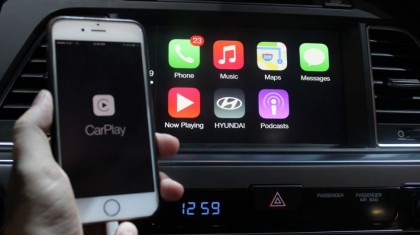Where does Apple go after the iPhone 6?
Just as A9 follows A8 and iPhone 6S follows iPhone 6, you can be assured that iOS 9 will follow iOS 8 on the software front.
We can expect Apple to announce iOS 9 at WWDC 2015 in June, and then to launch it alongside the iPhone 6S some time around September. Given its close link to the next iPhone, then, there's probably much that iOS 9 will be able to tell us about the iPhone 6S.
Unfortunately, virtually nothing is known about iOS 9 at this moment in time. We've speculated about what we might see, as well as what we'd like to see, but there's no concrete evidence at present.

Earlier in February, 9to5Mac claimed to have learned that iOS 9 will be called Monarch, after a Colorado ski resort. It claims that there will be fewer large feature additions this time around, with the focus instead being on improved stability and optimisation.
This tightening up of iOS running speeds, consistency, and stability could be an indicator that those aforementioned reports of an iPhone 6C are true. A new, cheaper iPhone would inevitably mean that the whole iPhone range would be running on similar 64-bit processors, helping that iOS 9 tightening-up process considerably.
As for new features, the report suggests that Apple could well focus on Apple Maps, with transit directions and indoor mapping said to be in the pipeline. This could hint at improved location sensors, though the current iPhone range appears pretty well equipped on this front already.
How the Apple Watch could set the schedule
A much better indication of where Apple might go with the next iPhone can be gleaned from its other related plans, starting with the Apple Watch. Though again, it's open to a large amount of interpretation.
Sign up for breaking news, reviews, opinion, top tech deals, and more.
As we've already discussed, there is a (slightly iffy) rumour doing the rounds that Apple will launch the iPhone 6S in the spring, just six months after the release of the iPhone 6.

The most compelling supporting argument for this to our mind (far more than Apple simply wanting to match the launch schedules of its Android rivals) is that Apple would want to release a brand new phone alongside the Apple Watch, lest consumers decide to wait until the end of the year to buy both together.
We can see why this would make a certain amount of sense. The Apple Watch is a big risk for Apple, as the company's first brand new form factor since the iPad, and one that's wholly reliant on the iPhone for its operation.

We still can't see Apple rendering the hugely popular iPhone 6 obsolete (or second rate) after just six months on the market, but the development of the Apple Watch and the timing of its release certainly gives us pause for thought.
CarPlay to drive the iPhone agenda
After the Apple Watch, Apple's CarPlay is the other iPhone-related initiative that could affect the development of the company's next smartphone.
Recent reports have raised the unexpected possibility of a full Apple Car, but before that, in 2015, we'll see Apple's plans for in-car entertainment and navigation.
Apple CarPlay is interesting because it is not a strict stand-alone in-car OS, instead integrating a user's iPhone into the set-up. Plug your iPhone in using the lightning cable, and you'll have largely hands and eyes-free access to your iPhone's functions.

This could point to a much improved Siri experience for the iPhone 6S with iOS 9. After all, if you're controlling everything to do with your phone with your voice rather just creating the odd reminder, you'll need pinpoint accuracy.
The prospect of Apple CarPlay also strengthens assertions that iOS 9 will improve the Apple Maps experience. One of the main smart functions people want in the car is reliable directions, so we're almost certain that the next iPhone will represent a massive step forward in navigation - whatever form the hardware itself takes.